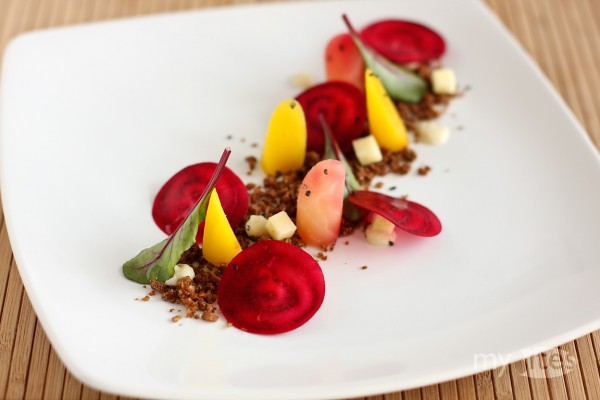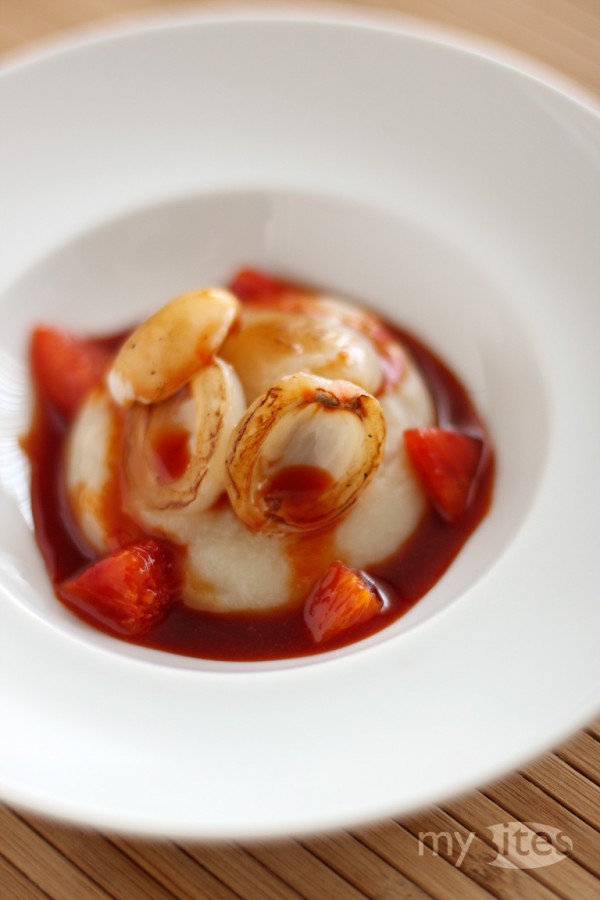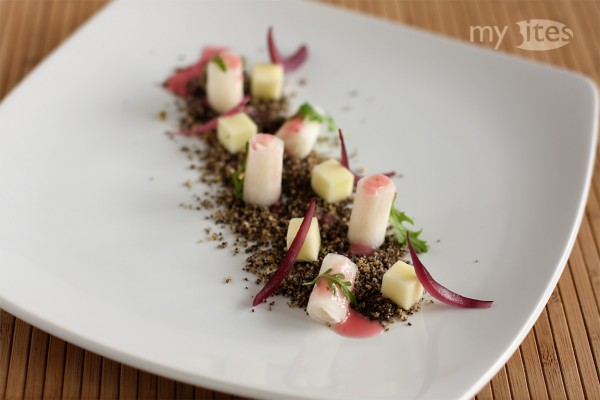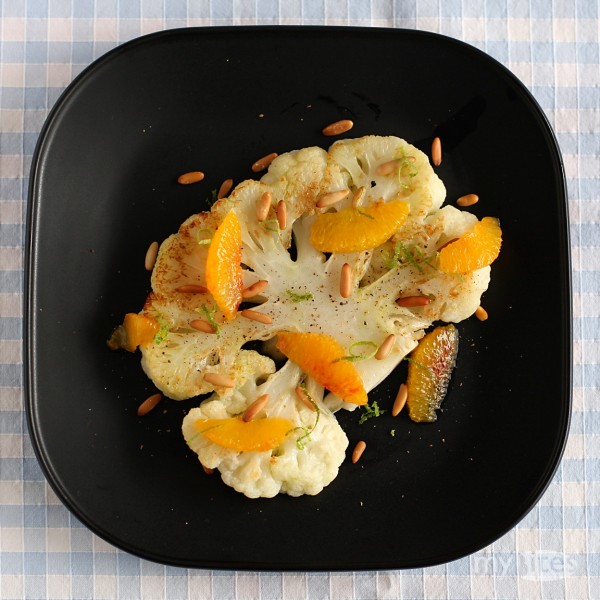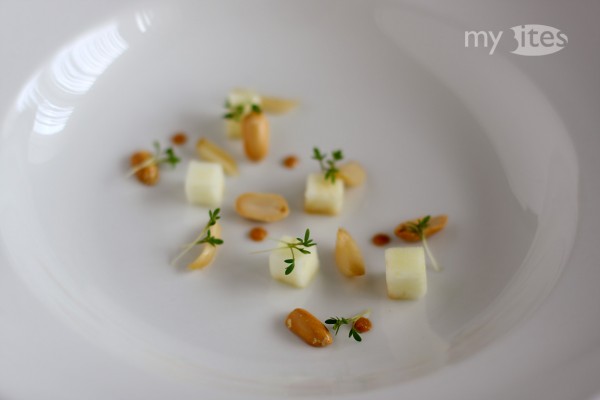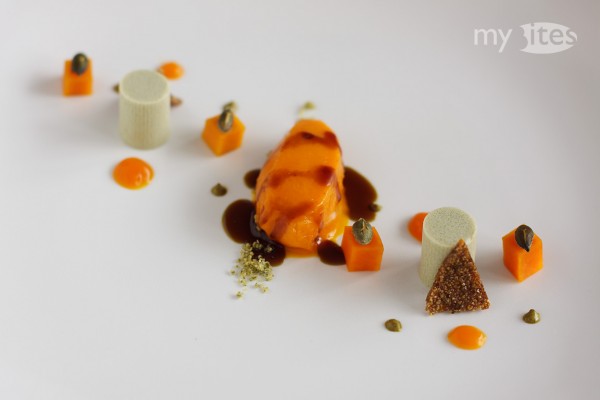It was a long and winding road until the golden beetroot finally made it to my kitchen. I first encountered yellow beets on a photo in the German food magazine Der Feinschmecker. Later on, in 2009 I got my hands on a copy of Heston Blumenthal’s Fat Duck Cookbook. It included a very simple yet funny recipe featuring orange and beetroot jelly only (see a photo here). The joke in this dish was that the flavors are swapped: the red jelly is made of blood orange juice and the yellow one using golden beets. I appreciate culinary surprises like this, because the twist and the surprise naturally forces the diner to focus more on the flavor. Among other things, this was also a reason why I began to look for golden beets. Unfortunately, the search took me 3 years, but I finally received 3 exemplars.
Tag Archives: vegan
Roasted Litchi with Salsify Puree and Blood Orange Sauce
How would you describe the texture of fresh litchis? It’s probably closest to some traditional grape varieties, but this association might come from its very sweet taste as well. Considering the texture only, to my opinion litchis resemble prawns or scallops. Based on this line of thought, I replaced the prawns to litchis in a simple recipe I developed 2 years ago.
Camomile Turnip on Poppy Seed Soil
In my previous post I gave a short review of the renewed Foodpairing website. In a short tutorial I went through all options of the Foodpairing Explorer and simultaneously created a combination of ingredients featuring poppy seeds, banana, turnip, apple and camomile. First this combination might sound a little bit weird, but if you take a closer look, they actually make sense together. Poppy seeds aren’t very sweet but slightly bitter on their own. Banana used as chips are less flavorful and less sweet compared to the raw fresh fruit and it contributes a nice crunchy texture too. Apples can be tart, turnips are actually very sweet and while they are both crisp, their consistencies differ. So to sum up, every main flavor and many different textures are present in the aforementioned combination, which is the foundation of creating an interesting vegan dish based on them.
Roasted Cauliflower with Orange, Mint and Pine Nuts
It’s very hard to find really bloody oranges. At the market here in Erlangen two different kinds of blood oranges are being sold: one half-blood orange called “Tarocco” and a full-blood orange named “Moro”. In the last years and during this winter as well, they were both pretty pale inside, containing only a few red pigments – if any at all. I usually try to determine the bloodiness of an orange by the color of the skin, but unfortunately a red pigmented skin doesn’t guarantee a deep red interior. Since I don’t know any better method, finding really red blood oranges remains a kind of lottery. The statistics for this current winter season are pretty disillusioning: only 1 of 20 blood oranges was truly deep red inside. I planned to use red blood oranges for this vegan dish too, but unfortunately the oranges I bought had yet again only very few red spots. Irrespectively of their color, they fulfilled their means of use by adding sourness and freshness to the dish.
Rutabaga Soup with Apple and Peanuts
When I cook rutabaga the evaporating scent always reminds me of peanuts. I’ve been planning to try the combination of rutabaga and peanut for a long time. Now it is rutabaga season, so I cooked a vegan soup using rutabaga and peanut butter.
Butternut Squash with Pumpkin Seeds
Thinking about vegan desserts it was surprising to me how much our usual desserts rely on animal products. Many – if not most – recipes contain either eggs, gelatin, butter, milk, cream or honey. Sometimes not even fruit sorbets are pure because adding some egg white or mascarpone makes their texture less crystalline. On the other hand, many animal products can be substituted: Instead of milk or cream you can create nutritious milk from rice or nuts. In many cases, butter can be substituted by flavorful vegetable oils. Honey too can be replaced by various natural sweeteners such as sugar beet molasses, agave or rice syrup. I believe that all these great plant-based products should not be treated as substitutions only, but rather as full-valued products. If we would stop thinking of them as substitutions and rather see them as full-valued ingredients, many new and creative desserts could be created.
